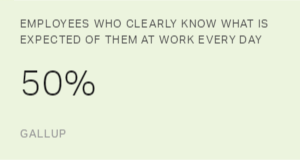Employees are more motivated to change if leaders can give them hope and inspiration.
Singapore recently celebrated Labor Day, so it's timely to reflect on the sheer number of hours that the country's organizations have poured into change initiatives. Of the many strategic initiatives that were launched in January -- from organizational restructuring and cultural alignment to market entry -- about 70% of them are doomed to fail. This means that of every workweek spent on these efforts, 3.5 days are wasted.
Behavioral economics -- the study of how human thought and behavior affect financial decisions -- provides us with clues for why creating lasting organizational change is so difficult. Factors such as status quo bias (a preference for keeping things the same) and loss aversion (the tendency to prefer avoiding losses more strongly than acquiring gains) interact to stack the odds against employees acting very differently for very long.
Organizational politics, silos, and market dynamics exert additional drag on effective change implementation. Poorly defined objectives, milestones that seem impossible, and metrics that are unclear or not objective can further complicate a change process.
So what can leaders do to improve their chances of successfully implementing organizational change? They should use an intentional, structured approach to determine where they are now, where they want to be in the future, and how they will bridge the gap.
- Assess the current state to understand where the organization is starting from as it begins the change process. What are the organization's strengths? What are its barriers to change? Are employees ready and willing to embrace the change and adopt new behaviors?
- Paint a clear, compelling picture of the future state and explain why change is necessary. Employees are more motivated to change if leaders can give them hope and inspiration. Workers need to envision the change and understand how their efforts will contribute to achieving it.
- Create a plan of action to bridge the gap between the current and future state. This plan serves as a road map for the journey and identifies the specific steps required to achieve the desired change.
Assess the current state
Novelist William Gibson's pithy observation that "The future is already here -- it's just not evenly distributed" applies in any change program in a large organization. There is often more variation among workgroups within a company than across many companies. For example, a company reviewing its customer engagement scores would likely find that some teams or locations provide outstanding service and retain most of their customers, while others alienate every customer they come in contact with. Looking within the company for bright spots -- places where excellence is thriving -- is often the most expedient way to improve customer service, rather than looking outside the company for solutions.
Assessing the current state can also identify employees who can serve as advocates for why the change is needed. Teams that are already embracing change can provide best practice examples to other groups. And employees and key stakeholders who openly express the need for change during this phase are more likely to support the change when it occurs.
Envision the future state
The second step involves creating and communicating a strong, compelling vision of the future. A process such as collaborative inquiry -- where individuals in teams are all active participants in researching and developing the future vision -- or other similar processes can help employees "own" the destination.
There are three critical errors that organizations must avoid when forming this vision. These problems occur when the vision is:
- Too "big picture." Behavioral change requires clear, actionable steps so people at all levels of the organization know what to do to bring about the desired change. Vision statements may be lofty and inspirational, but they don't take the place of the tactical actions workers must take to move toward the future. Without these steps, ambitious vision statements can create a paralyzing environment where leaders keep pushing for vaguely defined changes -- and followers never know if they have made progress.
- Too numbers-driven. Quantifiable goals are helpful, but they drive sustainable change only if employees understand why the numbers are important. Stating a goal that "30% of revenue should be attributable to a new market by 2017," for example, may be SMART (Specific, Measurable, Attainable, Realistic, and Time-bound), as management experts say goals should be. But for that goal to be compelling, leaders must provide a good answer when employees ask, "Why?"
- Too complicated. Visions of the future are often created by groups, and each member tries to advance his or her interests. The resulting "vision" is a patchwork of separate objectives with a thin thread of a narrative weaving them together. When it comes time to execute these visions, employees often wonder what they really mean -- and leaders struggle to understand whether the organization has made measurable progress toward achieving the desired change.
Talented managers often deliver daily nudges to keep employees moving in the right direction.
An example of a company that has gotten change right is DBS, Singapore's largest bank. When CEO Piyush Gupta joined the bank in 2009, one of its key imperatives was to clarify where the bank wanted to be. During a three-day off-site meeting, management crafted a clear strategy and a nine-point strategic road map that the bank has executed during the past four years. DBS aims to be a leading Asian bank, and to get there, its priorities include cementing its leadership in Singapore; growing Hong Kong; and building leading franchises in wealth management, SME banking, transaction banking, and treasury and markets.
Developing strategic clarity and a high degree of alignment across the firm has helped catalyze DBS' performance. The bank has turned in consistently strong financial performance over the past four years, customer satisfaction has improved significantly, and its employees are among the most engaged in the world.
Bridge the gap
The final piece in the change process involves creating an action plan to make the vision a reality. This is the appropriate stage to define strategy and tactics, roles and responsibilities, and project scope and structure while establishing the organizational infrastructure to support the change.
One key factor to consider throughout this stage is minimizing what Stanford professors Robert Sutton and Huggy Rao, authors of Scaling Up Excellence, call the "cognitive load." For example, as companies add new processes, they rarely retire old ones, requiring employees to remember more and more steps to complete an activity. When the load becomes too great, failure is inevitable. Organizations that are serious about creating change should look for ways to streamline new required behaviors where possible: for example, designing new offerings, such as employee stock ownership programs, to be opt-out to increase participation; integrating CRM technology with financial projection tools to reduce duplicated work; and training managers to coach employees on the job and in the moment.
Leaders and managers at all levels take center stage during this phase. When Gallup conducted a study of effective change management using our Change Management Index, we found that managers in the top quartile engaged 77% of their employees on average. Managers in the bottom quartile engaged only 1% of their employees on average, and 54% of their employees were actively disengaged. No matter how hard an organization's leaders advocate for change, when more than half of the employees on a given team refuse to participate, it's unlikely that change will happen.
Talented managers who can engage their teams and help employees see how their work connects to the vision for the future are key to every successful change effort. These managers often deliver daily nudges to keep employees moving in the right direction rather than waiting for annual performance reviews to help them correct their course.
In any other aspect of organizational performance, a 30% success rate would be entirely unacceptable. Yet too many companies continue to settle for such performance in their change management initiatives. Organizations that apply the principles of behavioral economics to change management -- by assessing their current state, envisioning their future state, and bridging the gap between them -- can thrive rather than merely survive as they change.


